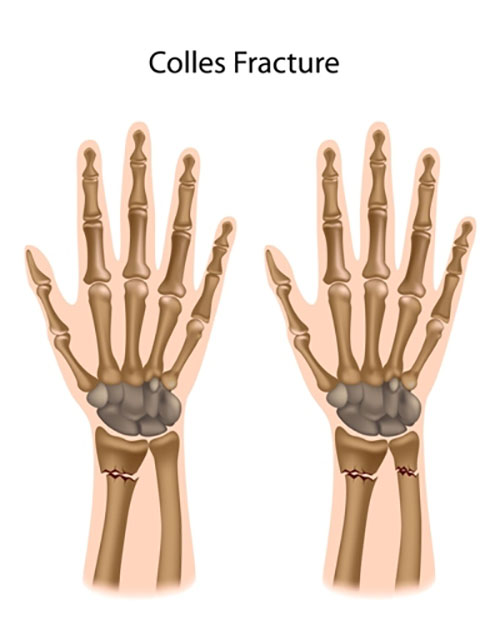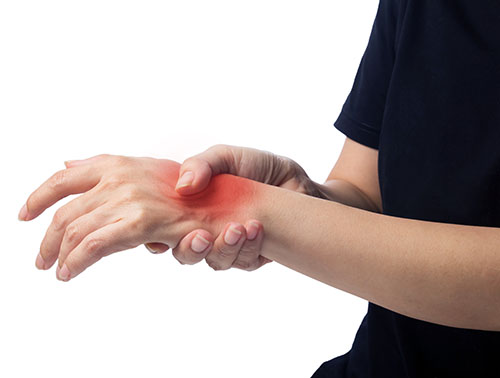| What is a Colles' Fracture?8 August 2017 | Eugene Most people think of a broken wrist as a simple snap of a bone, without much intricacy. The truth is, though, that a broken wrist can refer to any number of different breaks, of a multitude of different bones that make up the wrist and surrounding area. Fractures come in all sizes, shapes and severities, so when you break your wrist, it's crucial that you know where your break is situated, and what makes it different from other breaks, so that you can properly treat and rehabilitate the injury. Today, we'll focus on the Colles' Fracture, one of the most common classifications of broken wrist. What is a Colles' Fracture?A Colles' Fracture is traditionally known as a fracture of the distal radius (thumb side) in the forearm with dorsal and radial displacement of the wrist and hand. Although commonly referred to as a broken wrist, the fracture actually occurs in the radius bone of the forearm, and not the more complex carpal bones of the wrist. This type of fracture is often referred to as a "dinner fork" or "bayonet" fracture, due to the shape of the resulting injured forearm. The classification of Colles' Fractures has changed somewhat over the years, with more modern uses involving a broader spectrum of fracture. Nowadays, the term Colles' Fracture has come to mean almost any fracture of the radial side of the forearm near the wrist. This means that the Colles' Fracture label may actually cover other fractures such as Smith's, Chauffer's and Barton's.
Different types of Colles' Fractures under a modern classification Symptoms of a Colles' FractureIf you've broken your wrist, it's hard to ignore. While this is painfully obvious, it is also important to identify the site of your fracture so that you can take the proper protective measures, and guard the correct side of your arm and wrist. The common immediate symptoms of a Colles' Fracture include:
If you think you may have broken your wrist, see a doctor immediately. They will identify the severity of the injury and the health of the soft tissues surrounding the joint, and prescribe the appropriate treatment. Causes of a Colles' FractureColles' Fractures can result from any of a long list of activities and accidents, with only one thing in common: a fall onto an outstretched arm. This can happen in any number of ways, in all age groups, but it's the position of the hand that can be the most important factor in the etiology, and severity, of the fracture. In a classic Colles' Fracture, the victim falls forward, with their hand outstretched to break the fall. In a rare Smith's fracture, which falls under the Colles' umbrella in many modern definitions, the victim falls on a flexed wrist, which can often cause a more complex and painful break. Due to the high activity involved in many Colles' Fractures, they are often incurred by younger people (aged 18 - 25), who fall during sports where high velocities are reached. In older people, whose bones may be more brittle, a Colles' Fracture can occur from minor incidents with low intensity, such as a trip or fall around the home.
Area where most pain is situated following a Colles' Fracture Treatment of Colles' FracturesThe course of action to take after a Colles' Fracture is incurred depends on the area affected and the severity of the break, as well as the age and activity level of the patient. Since these breaks are so common, many different treatments to stabilise the bones have been developed. With the exception of surgery for the most severe fractures, these treatments generally fall into two categories:
At WristSupports.co.uk, we have a wide range of splints and braces that are suitable for the treatment and healing of Colles' Fractures. To view the entire range of Supports for Colles' Fractures that we have on offer, click the yellow button below. Do you have a question to ask or something to add? Why not leave us a comment below or find us on Facebook or Twitter. |
FREE UK DELIVERYon orders of £40 and over. EXPERT CUSTOMER SUPPORTRead our reviews. EASY PRODUCT RETURNSwith our 30 day returns policy. |


